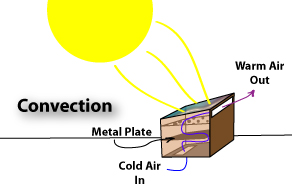
Solar Food Dryer
How it was made
Here at the homestead we dry wheat berries for our sprouted flour. We have used many different methods of drying the wheat: including oven, sun and light bulbs (see: Simple Solar Food Dryer). Here is a little more detail on a sun method for drying fruit and wheat berries using a solar food dryer box.
We purchased the book: The Solar Food Dryer: How to Make and Use Your Own Low-Cost, High Performance, Sun-Powered Food Dehydrator by Eben Fodor. The book outlined a way to construct the dryer and dry the food. “Gotta” love the simplicity!
Frame and Venting
The constructed of the box consisted of a glass top from an old end table, recycled plywood and fir lumber. The glass gave the box the ability to collect light and hold the heat. We hinged the front door flap and set our box on legs that gave us easy access for loading and unloading the food trays.  There are screened vents located at the top-back and bottom to allow for convection airflow. The back vent was screened and had a hinged door so we could open or close for temperature control.We also added two 2” screened vents on the sides near the top. We are located in the Southwest were ambient temperatures can exceed 100 degrees (hotter in direct sunlight). We did not want to cook the berries just de-hydrate them.
There are screened vents located at the top-back and bottom to allow for convection airflow. The back vent was screened and had a hinged door so we could open or close for temperature control.We also added two 2” screened vents on the sides near the top. We are located in the Southwest were ambient temperatures can exceed 100 degrees (hotter in direct sunlight). We did not want to cook the berries just de-hydrate them.
Convection
The ingenious part of this structure is the process of convection. For our purpose, convection is transfer of cooler air temperatures from the lower part of the dryer box to
the top. We harness this geophysical principle for two purposes: the convection causes airflow without a fan and dry’s the food from the bottom up.
How does his work? Warm sunlight heats the metal plate (painted black to absorb heat) located in the middle of the box but has direct sunlight. As cooler air is literally drawn from the bottom up, it is transferred to warm air from the radiant heat thrown off the heated metal plate. This creates an airflow and dry’s the food.
Thermostats and Light Bulbs
We placed a meat thermometer  through the side and near the top of the box. It is an inexpensive and somewhat accurate way to measure the heat in the box. We could open and close the top vent to adjust the temperature.
through the side and near the top of the box. It is an inexpensive and somewhat accurate way to measure the heat in the box. We could open and close the top vent to adjust the temperature.
We also made the dryer usable on cooler days by placing light bulbs at the bottom. We wired in a hot water thermostat as a switch to turn the bulbs on and at the desired temperature (on at 100 and off at 120 degrees F). However, our SW location is mostly hot and therefore did not use the bulbs very often.
Gary
December 2012






